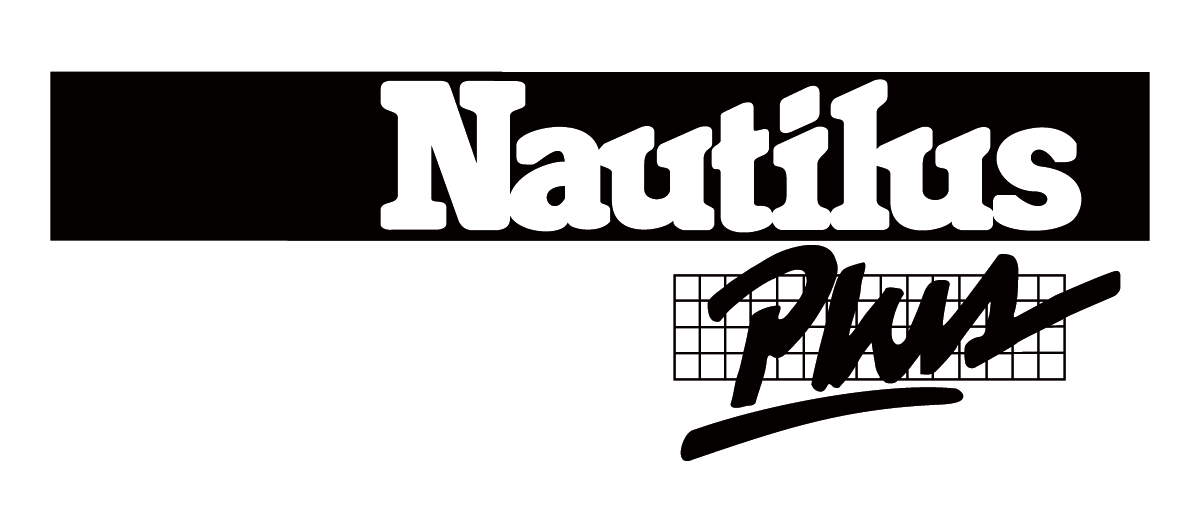
Our lifestyles often require us to sit down. This weakens the gluteal muscles. It is important to strengthen these muscles through training, for functional reasons, muscular balance and to prevent or treat musculoskeletal pain. Hip extension, commonly known as a hip thrust, is the best movement for isolating the gluteus maximus, which is the largest muscle in the human body and potentially the strongest. In recent years, the hip thrust has become a must-have movement in bodybuilding. It has been elevated to the same level as the squat and deadlift as being essential for developing strength and muscle mass in the lower limbs.
Here are different ways of performing this movement, depending on your training phase or level. For each option, make sure you keep your knees at a 90-degree angle. If the feet are too close to your glutes, you may feel the movement in the quadriceps. On the other hand, if the feet are too close to your buttocks, you may feel the movement even more in the quadriceps.
Adaptation phase (beginner)
Are you just starting out? Start with a glute bridge isometric hold on the floor for 30 to 60 seconds (without moving). Concentrate on squeezing the buttocks. Keep the abdominals contracted too, but not to the point where you can’t breathe (this applies to all phases of the movement). You shouldn’t feel any pain in your lower back.
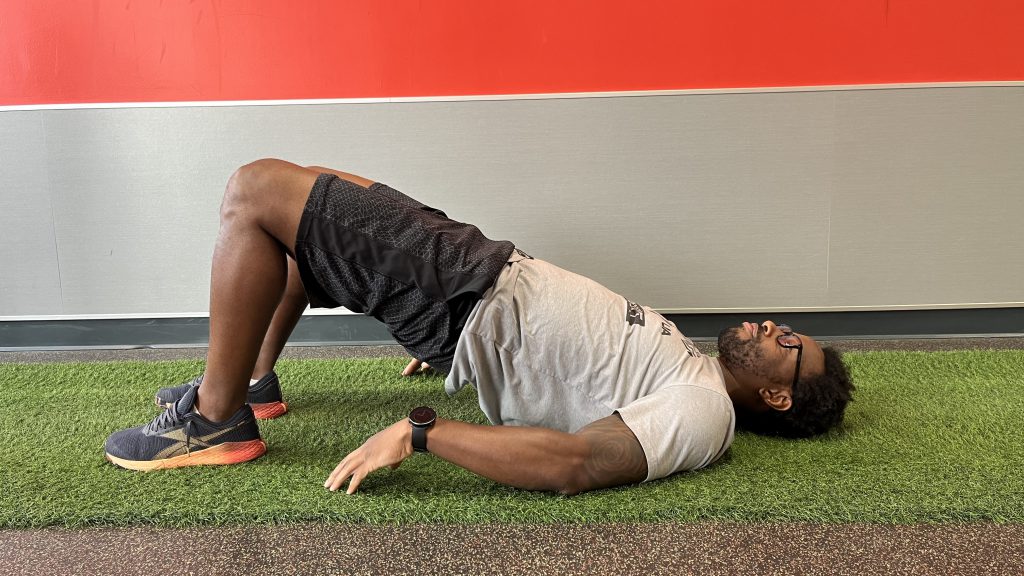
Intermediate adaptation or endurance phase
Now’s a good time to start leaning your upper back on a bench or box. This position will allow greater amplitude to the movement compared with doing it on the floor. Start without added weight and concentrate on feeling the muscle contraction. You should be able to feel the muscle work before adding any weight.
I also suggest the unweighted option for endurance training, i.e., sets of 20 reps or more.
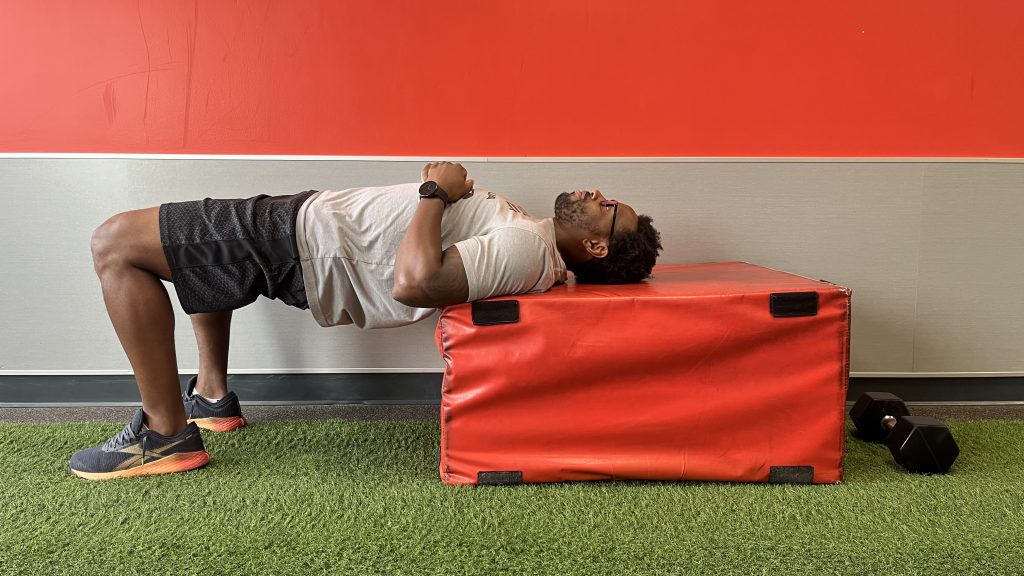
Stabilization phase
If you want to work your stabilizing muscles, you can place your upper back on a ball instead of a bench. You could also add weight, but make sure you’re well in control of the ball. This option requires a little more work from your abdominal belt. You can also do it in your endurance phase.
I suggest, however, that you avoid using the ball if you’re adding heavier weights and working on strength or hypertrophy. The instability of the ball is not conducive to heavier loads.
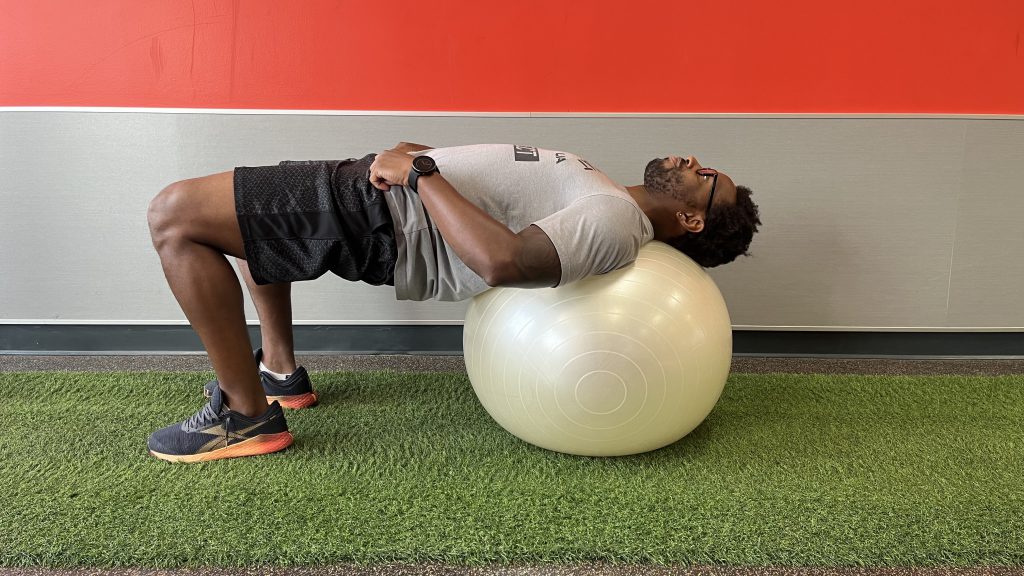
Stabilization endurance training phase
We tend to have one side stronger than the other. This is even more pronounced when we’ve had an injury and used one side more than the other for an extended period. To ensure that both sides are equally strong, there’s the option of a single-leg hip thrust. Note that this is also a good way to increase the difficulty of the unloaded hip thrust if you don’t have access to weights. You can always add weight to this option, but make sure you do the same number of reps on each side.
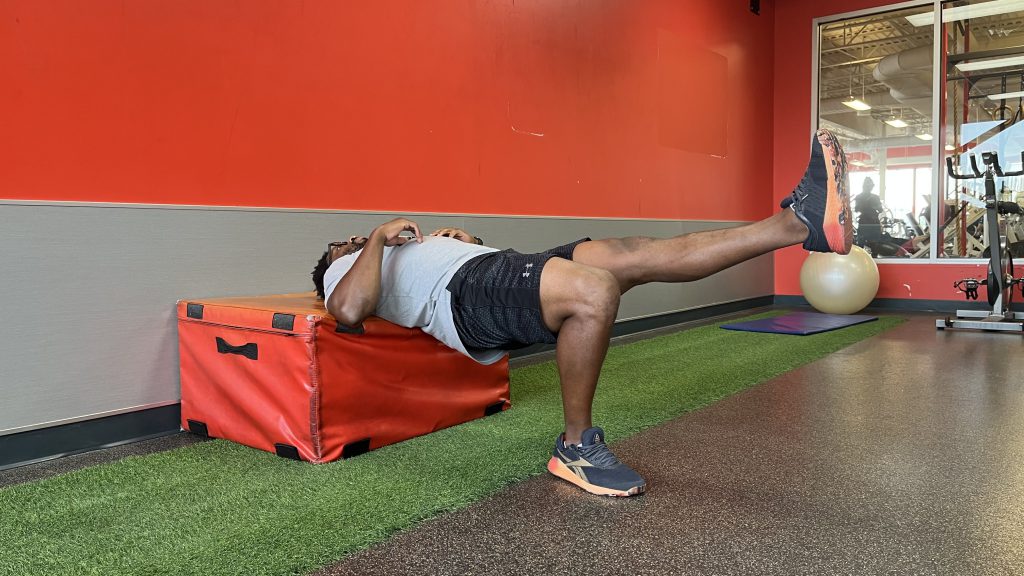
Hypertrophy phase
You should have several months’ experience in weight training before embarking on a hypertrophy phase, and even more before working on building strength. If you’ve achieved this, it’s time to add some weight to your glute bridge or hip thrust. For hypertrophy, we target 8-12 RM*, and for strength, 6 RM and less.
You can use a powerlifting bar. You place your upper back on a bench or box and the bar in the hollow of your hips when you’re in the start position. Use a cushion on the bar to make it more comfortable. As mentioned at the start of this article, the gluteus maximus is a very strong muscle, so you have the potential to lift very heavy loads with this movement. Increase your weights gradually, and make sure you don’t feel any pain in your lower back.
*RM: Maximum Repetition. For example, 6 RM corresponds to the maximum load you can lift 6 times in a row.
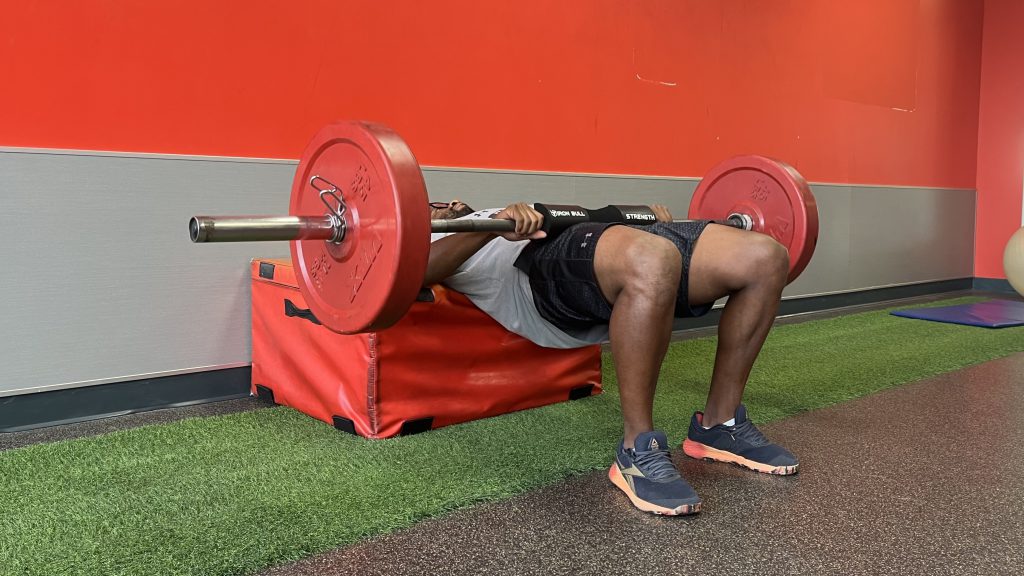
The Smith machine (or fixed bar) is ideal for strength and hypertrophy training. For either case, the Smith machine, and the bar, can be used while your feet are raised on a bench (lower than the one your back is resting on) to increase your range of motion and thus maximize your workout potential. It provides more stability than the free bar and greater safety, as the bar can be easily hooked in place during movement.
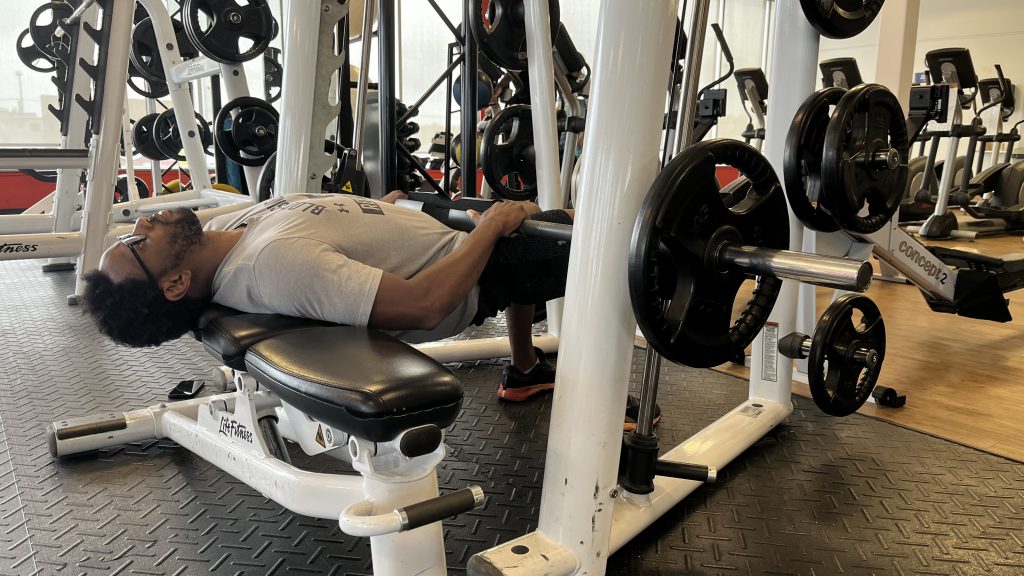
These are just a few of the many variations of hip thrust, as the possibilities are virtually limitless. Whichever option you choose, concentrate on feeling the work in your glutes and make sure you don’t experience any pain or discomfort.
Caution!
Don’t overdo this exercise! No need to do 20 sets to get results. On the contrary, do other exercises that involve all gluteal muscles (maximus, medius, and minimus) to make your workout more complete. For exercise ideas, read Karine Larose’s article “Top 10 Exercises to tone your Butt’’. Don’t hesitate to consult a kinesiologist to help you determine your training phase, as well as to build effective, well-balanced, safe workout programs specific to your needs and goals!
Hip thrust: when and how to execute it is a post from Nautilus Plus. The Nautilus Plus blog aims to help people in their journey to fitness through articles on training, nutrition, motivation, exercise and healthy recipes.
Copyright © Nautilus Plus 2023
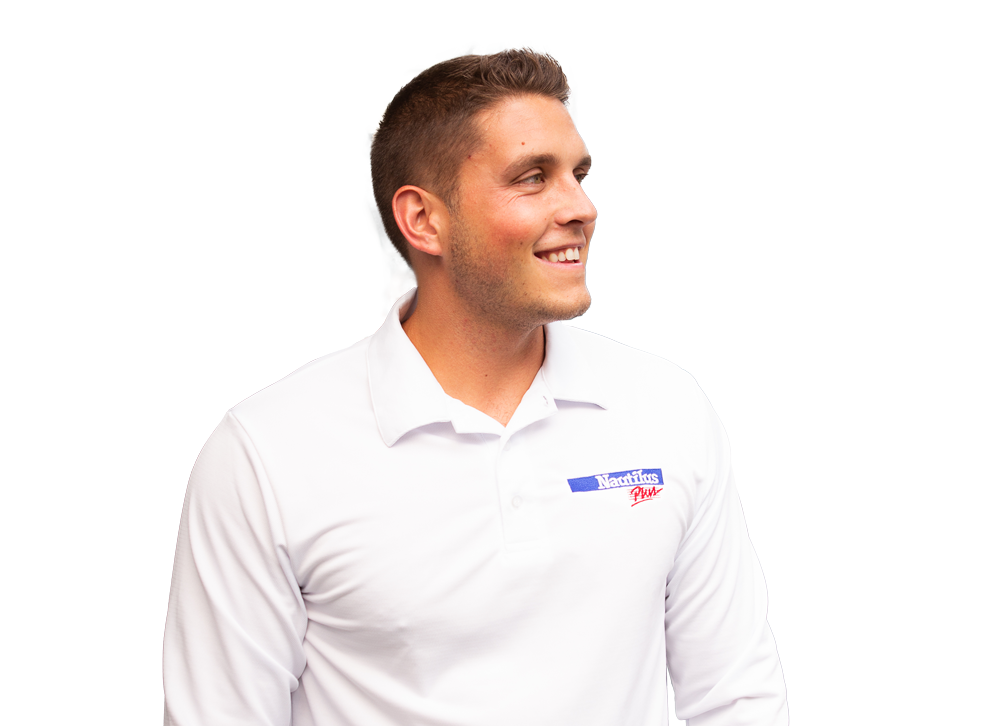
A session with a personal trainer will help you to progress!

Let's determine your fitness goals together and get some expert advice!
Make an appointment with a personal trainer